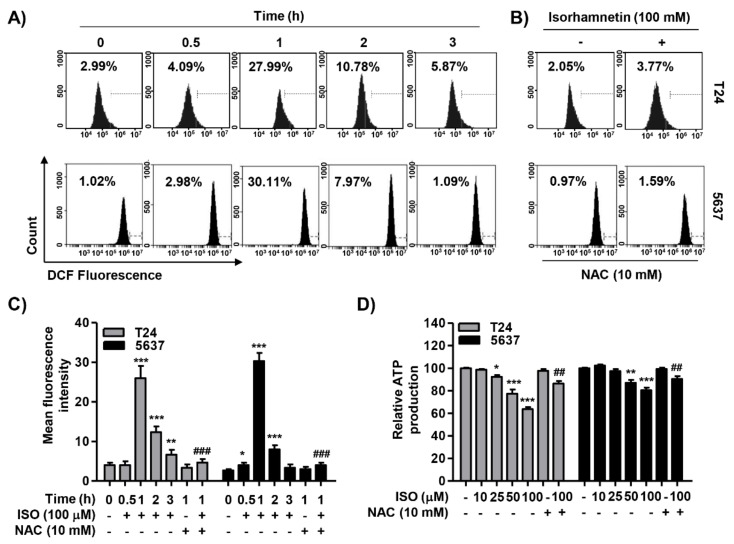Figure 5.
Accumulation of reactive oxygen species (ROS) and decrease of ATP content using isorhamnetin in bladder cancer cells. (A) Cells were treated with 100 μM isorhamnetin for the indicated times. (B) The cells were pre-treated with or without 10 mM N-acetyl-L-cysteine (NAC) for 1 h before isorhamnetin treatment for 1 h. (A,B) The medium was discarded and the cells were incubated for 20 min with medium containing 5,6-carboxy-2′,7′-dichlorodihydrofluorescein diacetate (DCF-DA). ROS generation was measured using flow cytometry. (C) Each bar represents the mean ± SD of three independent experiments. (D) After treatment with the indicated concentrations of isorhamnetin in the presence or absence of NAC, the content of intracellular ATP was measured. Each point represents the mean ± SD of three independent experiments (* p < 0.05, ** p < 0.001, and *** p < 0.0001 compared to control; ## p <0.001 and ### p < 0.0001 compared to isorhamnetin-treated cells). ISO—isorhamnetin.

